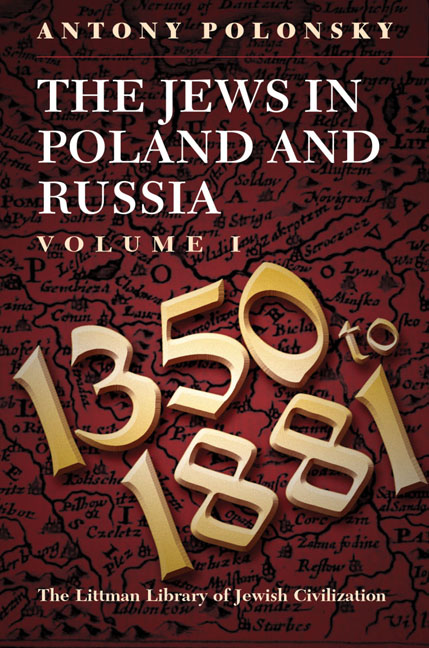Book contents
- Frontmatter
- Dedication
- Acknowledgements
- Contents
- List of Maps
- List of Tables
- Note on Transliteration
- Note on Place Names
- Maps
- General Introduction
- PART I JEWISH LIFE IN POLAND–LITHUANIA TO 1750
- PART II ATTEMPTS TO TRANSFORM AND INTEGRATE THE JEWS, AND THE JEWISH RESPONSE, 1750–1880
- Glossary
- Bibliography
- Index
8 - The Jews in Galicia to the mid-1870s
- Frontmatter
- Dedication
- Acknowledgements
- Contents
- List of Maps
- List of Tables
- Note on Transliteration
- Note on Place Names
- Maps
- General Introduction
- PART I JEWISH LIFE IN POLAND–LITHUANIA TO 1750
- PART II ATTEMPTS TO TRANSFORM AND INTEGRATE THE JEWS, AND THE JEWISH RESPONSE, 1750–1880
- Glossary
- Bibliography
- Index
Summary
THE NAME GALICIA was derived from the medieval principality of Halich, one of the successor states of Kievan Rus. It was revived by the Habsburgs in the form of ‘the Kingdom of Galicia and Lodomeria’ (Lodomeria was the Latinized version of another Kievan successor state, Vladimir), which had once been claimed by the Hungarian Crown and which thus gave a spurious justification for the incorporation of the area into the Habsburg empire in 1772. The Jewish statistician Abraham Brawer, writing after Galicia had become part of the new Poland, observed, ‘There are few areas for which diplomats drew maps with such unnatural and unhistorical borders as they did for Galicia.’
This statement is undoubtedly valid, politically speaking, but, from the viewpoint of east European Jewish history, Galicia developed a distinct character and contained within its borders one of the largest concentrations of Jews in east central Europe. Its Jewish population grew from around 178,000 in 1772 (out of a total population of just over 3 million inhabitants) to 317,000 in 1850 (out of 4.7 million) and 811,000 in 1900 (out of 7.3 million), when Jews made up over 11 per cent of the total population. By that date a significant proportion of the Jews still lived in the countryside—36.6 per cent by one estimate—and there seems to have been a remigration of Jews to the villages in the last quarter of the nineteenth century. 3 Jews were also a significant presence in cities and market towns, in at least seven of which they formed the majority of the population.
The territorial extent of Galicia varied considerably in the century and a half during which the area was under Austrian rule (see Map 6). The core of the province was the area of Red Rus, with its capital of Lviv (Lwów, Lemberg), which in the fourteenth century had passed from the rule of one of the princely successor states of the Grand Duchy of Kiev to the Polish Crown. The area of Małopolska around Kraków was incorporated into Austria as a consequence of the third partition of Poland but was then transferred to the Napoleonic Duchy of Warsaw in 1809. At the Congress of Vienna in 1815 the town of Krakow, with a small area around it, was made an independent republic under the protection of the three partitioning powers.
- Type
- Chapter
- Information
- The Jews in Poland and RussiaVolume I: 1350 to 1881, pp. 248 - 272Publisher: Liverpool University PressPrint publication year: 2009

